Temperature sensor is used to measure temperature of any body or surface temperature plays a very important part in our day to day life. Any increase or decrease in temperature affects our daily routine. Even our body maintains our body temperature at 37 degree Celsius. Any deviation from this means there is something wrong in our body.
Same way in other fields like Industry, Agriculture, consumer electronics, cooking etc temperature plays a very important role. Monitoring and controlling this temperature not only helps us to save from dangerous situation but also provides means to gain maximum benefit from the situation.
Today we will look at how we can monitor and control temperature and various kind of sensors with which we can measure any temperature.
Temperature sensor technologies can broadly divided into four sections –
Following table shows various aspects of each temperature sensor technology briefly.

Now let us see each technology in some detail –
IC Temperature sensor –
IC temperature sensors rely on predictive temperature dependence of a silicon band gap. As shown in following figure, the precision current sources the internal forward biased P-N junction with the resulting base-to-emitter voltage change ( delta VBE) that corresponds to the device temperature.

Because of predictable behavior of silicon, ICs offer high linearity and accuracy ( up to 0.1 degree C) across a wide temperature range. As sensors are made from silicon, they can also integrate system functionality such as analog-to-digital converters ( ADCs) or comparators that ultimately reduce system complexity and offer overall smaller footprint. This helps greatly to integrate them with latest microcontrollers and other electronics systems.
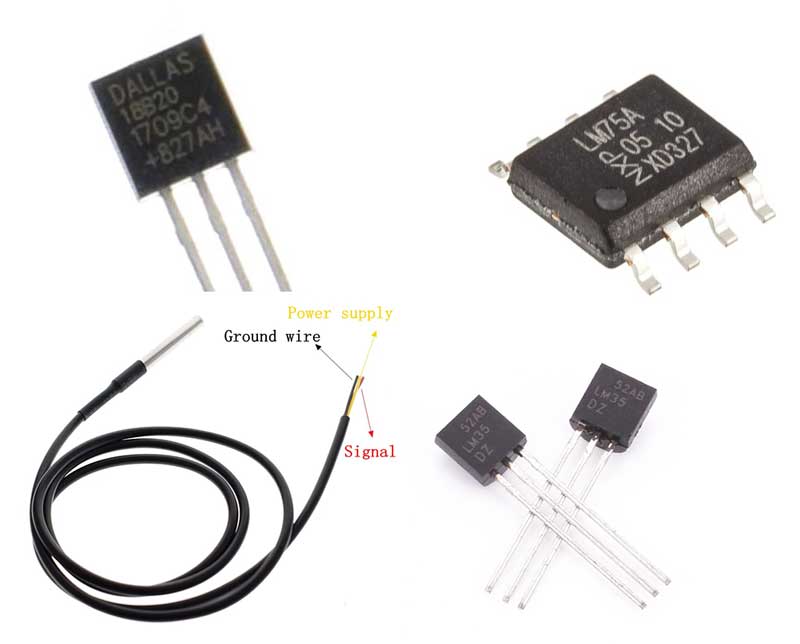
Thermistor Temperature Sensor
Thermistors are passive components, with a resistance greatly dependent upon temperature. Thermistors are of two kinds – Positive Temperature Coefficient ( PTC) type and Negative Temperature Coefficient ( NTC) type.
Thermistors come in varity of packages but a typical implemention requires some additional parts also. While PTC thermistors offer linearity, NTC thermistors on the other hand are non-linear which results in increased calibration costs and software overhead.
The following figure shows typical implementation of thermistor.

Though cheap, these kind of implementation suffers from low level of accuracy because of various factors like – NTC tolerance, the temperature drift of bias resistor, quantization errors of ADCs, linearization errors inherent to NTCs etc.

RTD Temperature Sensor
Resistance Temperature Detectors – popularly known as RTDs are temperature sensors made of pure material like platinum, nickel or copper with a highly predictable resistance – temperature relationship.
Platinum RTDs are generally highly accurate and very linear across wide temperature range upto 600 degree C.
Following figure show a typical implementation of RTD sensor.

As the implementation of such sensor higher number of components, the overall size increases compared to other solutions. It also involves complex circuitry. RTDs require callibration during manufacturing and also annual calibration in the field.
While designing a system with RTDs, we have to keep in mind some factors like – RTD tolerance, self-heating, ADC quantization errors and references.

Thermocouple Temperature Sensor –
Thermocouples are made of two different electrical conductors that form electrical junction at different temperatures. A thermocouple produces a temperature dependent voltage as a result of the thermoelectric Seeback effect. This voltage is directly proptional to the difference in temperature between the hot junction and cold junction.
As per Wikipedia –
The Seebeck effect is the conversion of heat directly into electricity at the junction of different types of wire. Originally discovered in 1794 by Italian scientist Alessandro Volta,[3][note 1] it is named after the Baltic German physicist Thomas Johann Seebeck, who in 1821 independently rediscovered it.[4] It was observed that a compass needle would be deflected by a closed loop formed by two different metals joined in two places, with a temperature difference between the joints.
So to measure the temperature of any surface ( also refered as Hot junction if you use thermocouple to measure temperature ), you should know the temperature of cold junction. Here the accuracy is limited by the fact that there are two systems that have separate tolerances and capabilities interacting with each other.
Following figure shows a typical CJC implementation with a thermocouple and an external sensor to determine the hot junction temperature.

Various kinds of thermocouple temperature sensors

Thus we have seen, the main four kind of temperature sensors. In coming days we will see how we can practically measure temperature using microcontrollers and also using Arduino board.
For further reading please refer informative ebook published by Texas Instruments. Many figures shown above are quoted from this very useful publication.
If you have any query, do contact our support team at support (at) arnin.in



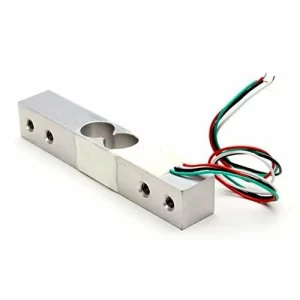
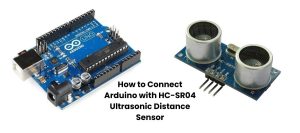









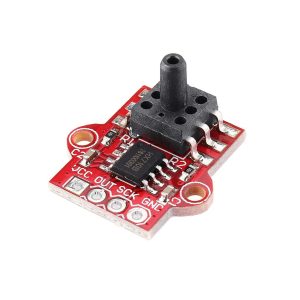


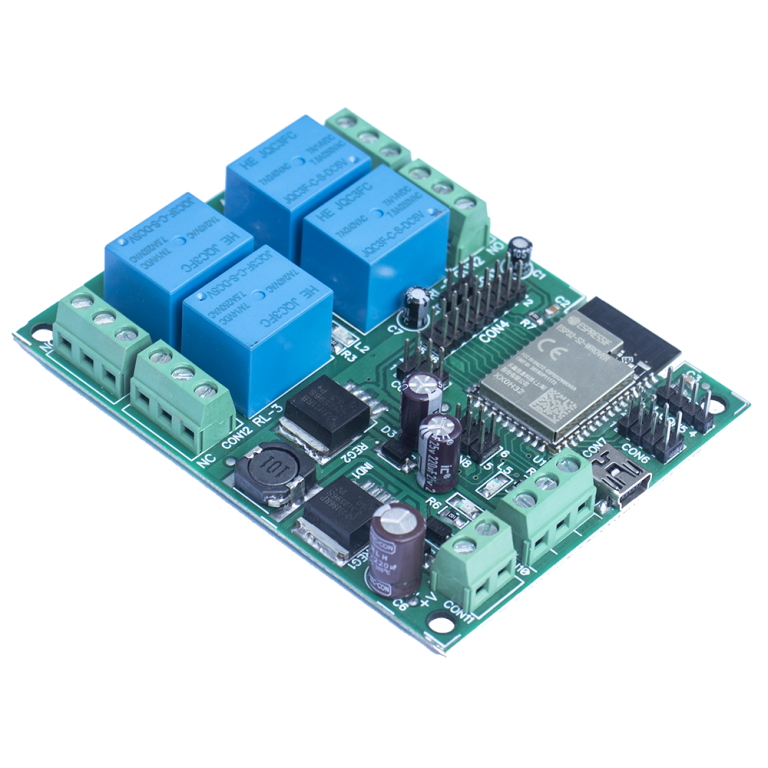



+ There are no comments
Add yours